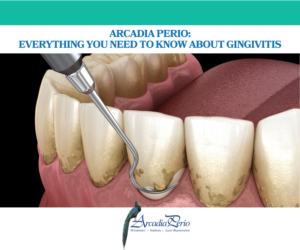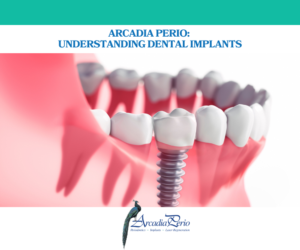Recent Posts
At Arcadia Perio, we’re committed to providing the latest…
Gum or tissue grafting is a specialized dental procedure…
Gingivitis is a common and mild form of gum…
At Arcadia Perio, we understand that the thought of…
At Arcadia Perio, we are committed to providing the…
Periodontal disease is the most common oral disease among American adults. In fact, it’s so common that there’s a 50% chance you already have it if you’re over 30.
Also called gum disease, it starts with mild gum inflammation called gingivitis. If not treated, the condition worsens, loosening your teeth. Eventually, your teeth could fall out.
The good news is that periodontal disease is treatable. Learn to recognize the signs of this condition so you can protect your smile. At Arcadia Perio, our team of dental professionals, led by J. Paul Fuentes, DDS, and Andrew Peterson, DMD, are here to help.
Telltale signs of periodontal disease
Your gums protect your jaw and the roots of your teeth. Healthy gums help hold your teeth in place and seal out harmful bacteria. Strong oral hygiene keeps your teeth and your gums clean, but if you don’t brush and floss regularly, periodontal disease can develop.
Here are some of the most common signs of gingivitis and periodontal disease.
Bleeding gums
Healthy gums don’t bleed, but periodontal disease can make them more sensitive. If you notice bleeding gums when you brush or floss or at your regular dental cleanings, it may be a sign of periodontal disease.
Puffy gums
Puffy gums are another visual cue that could indicate periodontal disease. When bacteria builds up on your teeth, it can infect and inflame surrounding gum tissue. Healthy gums are pink, but periodontal disease may make them red, puffy, and tender.
Receding gumline
If you have periodontal disease, gum tissue may begin pulling away from your teeth. Your gums should fit snugly around the base of your teeth, but inflammation can make them recede and reveal too much of your tooth roots.
Bad breath
Chronic bad breath, or halitosis, could be a sign of periodontal disease. Excessive bacteria buildup on teeth and under gums can cause bad breath or a permanent bad taste in your mouth.
Tooth sensitivity
Receding gums and other symptoms of periodontal disease can make your teeth feel sensitive. Pain when consuming food or beverages that are hot, cold, or sweet is one of the most noticeable signs of tooth sensitivity. You might also notice pain when biting or chewing, no matter the food’s temperature.
Loose teeth
When periodontal disease progresses, it can cause teeth to loosen in their sockets. You might notice a tooth that’s obviously loose, or the signs may be more subtle. Slowly loosening teeth can shift in your mouth, changing the way your teeth fit together when you bite down.
Stop the damage of periodontal disease
Good oral hygiene is your best defense against periodontal disease. Brush your teeth at least twice a day and floss once a day. Use a fluoride mouthwash for extra protection.
Along with at-home care, visit our office for routine dental cleanings. Everyone should get a professional cleaning once or twice a year. And if you notice symptoms of gum disease between appointments, don’t wait to seek treatment.
We offer customized treatments to stop periodontal disease and even reverse some of the damage that it causes. From LANAP™ laser dentistry to regenerative therapies, there’s a treatment to preserve your teeth and your smile.
Do these symptoms sound familiar? Schedule a consultation with us at Arcadia Perio. Contact our Arcadia, California, office today.
Have Questions?
We’ll Reply Quickly.
Social
Appointments
We will do our best to accommodate your busy schedule. Request an appointment today!
Office Hours
Monday 8:00 am – 5:00 pm
Tuesday 8:00 am – 5:00 pm
Wednesday 8:00 am – 5:00 pm
Thursday 8:00 am – 5:00 pm
Friday 8:00 am – 12:00 pm
Contact Us
301 West Huntington Drive, #507
Arcadia, CA 91007
Phone: (626) 447-0945
© Copyright 2025. Arcadia Perio | Sitemap | Accessibility







